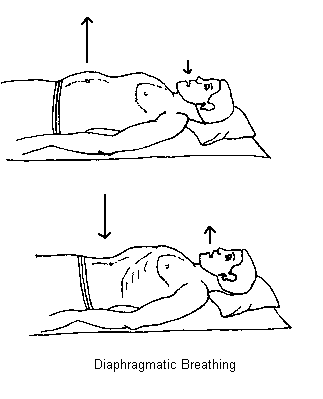The Diaphragm & Low Back pain
Reference:Hodges P, Gandevia S 2000 Changes in intra-abdominal pressure during postural and respiratory activation of the human diaphragm. Journal of Applied Physiology 89(3): 967-976
There is now strong evidence that supports the hypothesis that the Diaphragm muscle is directly involved in the stability of the lumbar spine.
This study looked at EMG output of the diaphragm, the transversus abdominis and the erector spinae muscles. They also measured intra-abdominal, intra-thoracic pressures during limb movements.
Study Conclusion: The diaphragm muscle is responsible for trunk stability while at the same time controlling inspiration and expiration.
Clinical Relevance: Ask your future patients with ?Chronic Low Back Pain? to take in a deep breath and notice the apical breathing pattern. Then attempt to teach them diaphragmatic breathing and notice they have ?no clue? where their diaphragm is and ?no clue? on how to consciously activate it.
Personal Comment:Although retraining the diaphragm can be frustrating for both the patient and the therapists, I feel spending 5 minutes teaching taking in deep slow diaphragmatic breaths can be far more beneficial that any other modality!…after all what?s more important than Oxygen?
Posted on: January 25, 2002
Categories: Lumbar Spine , SI & Pelvis


